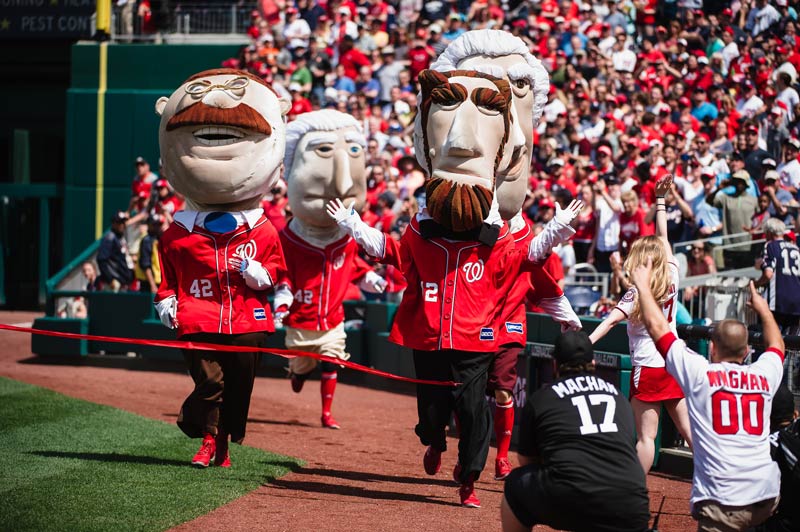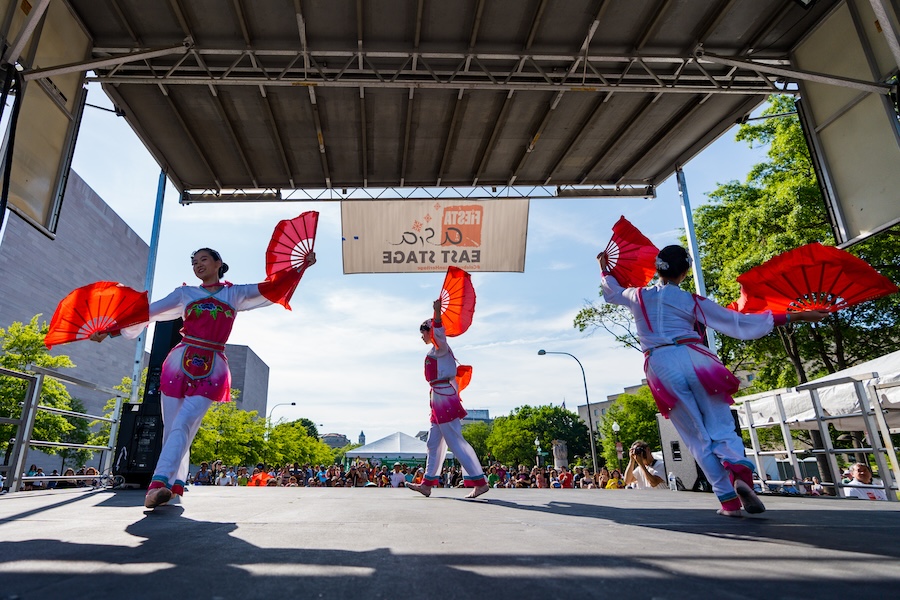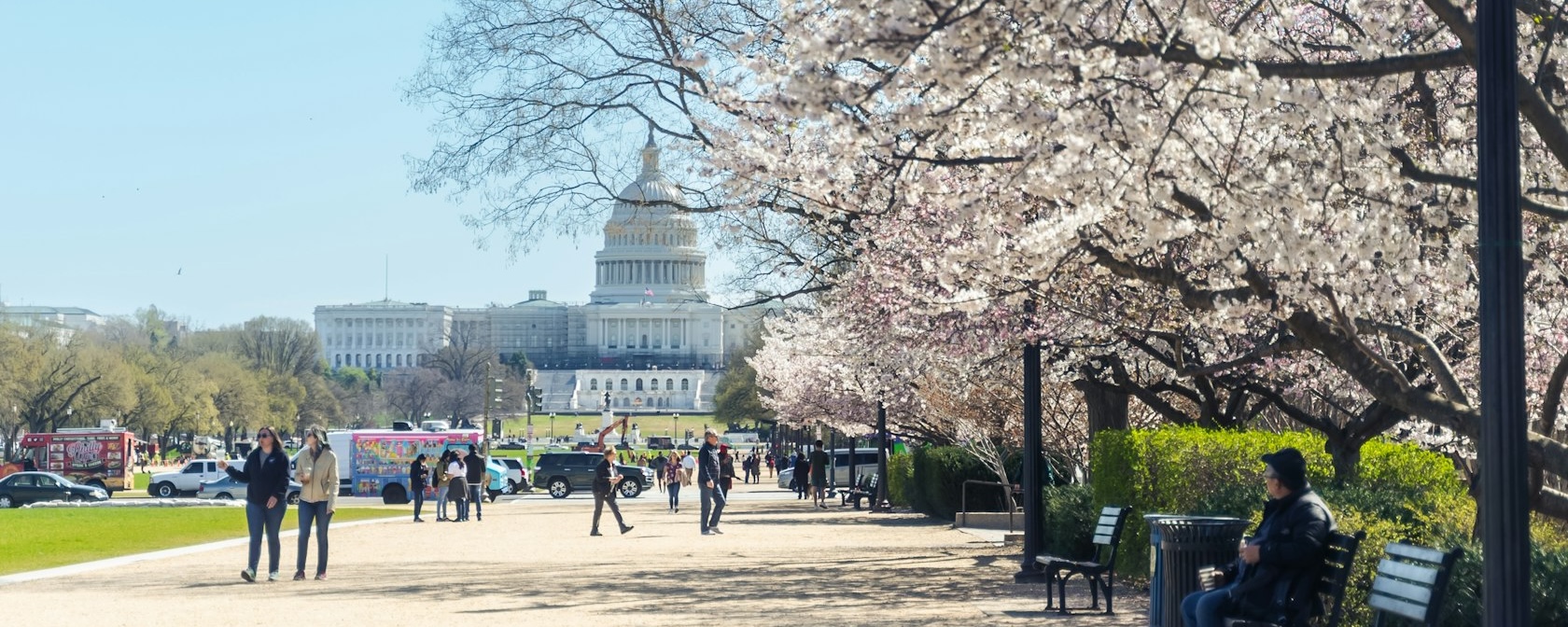MAP IT

Fascinating Black history and culture awaits in DC, from the Smithsonian National Museum of African American History and Culture to the Martin Luther King, Jr. Memorial and so much more.
African American history and culture is an essential part of experiencing Washington, DC. The city that hosted the March on Washington and Martin Luther King, Jr.’s “I Have A Dream” speech features numerous other free-to-experience sites that help you to discover the Black experience, including the Smithsonian National Museum of African American History and Culture, the former home of Frederick Douglass and many more sites. Read on and explore some of our favorites.
01
Visit the Smithsonian National Museum of African American History and Culture
The Smithsonian National Museum of African American History and Culture is located on the National Mall adjacent to the Washington Monument. The museum exhibits the richness and diversity of the African American experience, with a mission of promoting a dialogue on race and inspiring healing.
02
Stand beside Martin Luther King, Jr.

The four-acre crescent shaped site in West Potomac Park on the Tidal Basin was selected for the Martin Luther King Jr., Memorial. President Obama dedicated the memorial on Oct. 16, 2011. The two mountains represent the “Mountain of Despair” reaching for “Hope from Despair,” while the space in the middle symbolizes the distance between them. The memorial is one of the highlights of the National Mall.
03
Commemorate Emancipation Day every April 16

The capital city was a dichotomy during the Civil War. Slave traders still bought and sold slaves in the city, while abolitionists in the community fought fiercely against slavery. Congress issued the DC Compensated Emancipation Act in April of 1862, nine months before Lincoln made his Emancipation Proclamation. It was a legal and symbolic act that officially ended slavery in DC and led to the eventual national decree. Washingtonians, as well as the District of Columbia government, celebrate Emancipation Day each year with a parade, live music, food and fireworks.
04
Tour the African American Civil War Memorial

During the Civil War, more than 10 percent of the soldiers serving in the Union Army were African American. As their contributions had not been properly recognized before, the African American Civil War Memorial was dedicated in 1998 in the historic U Street neighborhood.
05
Head east of the Anacostia River to the home of Frederick Douglass
Famed abolitionist Frederick Douglass was born into slavery, but after running away, he became an outspoken advocate who had the ear of American leaders. During the Civil War, Douglass encouraged President Lincoln to live up to the ideals stated in the Declaration of Independence. Years later, Douglass bought his beloved home, Cedar Hill in Anacostia, and lived there until his death.
06
Spot the "I Have a Dream" steps at the Lincoln Memorial

There are five lines etched on the steps of the Lincoln Memorial designating where Dr. Martin Luther King Jr. delivered his “I Have a Dream Speech.” If you can't make out the words, you may want to pour some water over the stone to better read the text. The powerful lines further intertwine Dr. King and President Lincoln, two vital figures in the history of civil rights.
07
Take in Benjamin Banneker Memorial Park in L’Enfant Plaza
Benjamin Banneker was a self-educated astronomer, farmer, mathematician and urban planner. In 1791, as a free man, Banneker literally helped shape the District by working with Major Andrew Ellicott to survey the boundaries of the future nation’s capital. Benjamin Banneker Memorial Park, a favorite of landscape architects, pays homage to the surveyor.
08
Pay homage to icons at the Howard Theatre Walk of Fame
The Howard Theatre Walk of Fame is the first of its kind in the District, a stunning tribute to 20th century African American icons. Extending from the 1900 block of 7th Street NW to the Howard Theatre entrance on T Street NW, the walk depicts its honorees in bronze medallions featuring hand-sculpted bas relief portraits embedded in the sidewalk. Even certain architectural details from the theater's facade are mirrored in the medallions. As you walk, you’ll notice the incredible array of musicians honored, including Ella Fitzgerald, James Brown, Marvin Gaye, Chuck Brown and Mamie Smith. Each one performed at Howard Theatre and helped to establish the vital legacy that the venue holds today.
09
Enjoy free performances during DCJazzFest

The DCJazzFest is held at venues across the city every summer. The festival features numerous programs, including free performances and competitions. The weekend is filled with music and activities that the entire family can enjoy. Make sure to check the festival's website for any other free opportunities, as well as schedules and lineups for the next citywide event.
10
Take a guided tour of the Mary McLeod Bethune Council House

Situated near Logan Circle, the Mary McLeod Bethune Council House is the home of the organizer and national political leader who founded the National Council of Negro Women. Her home is now a National Historic Site where interpreters share stories of her life and legacy. Across town in Capitol Hill, you can also visit a statue dedicated in Mary McLeod Bethune's honor.
11
Check out the mural at Ben’s Chili Bowl

Ben’s Chili Bowl is a DC institution. The fixture on U Street is famous for its food, especially the half smokes, but it also has a signature mural on its facade that was recently updated. This piece includes African American icons both local and national, including the Obamas, Prince, Wale, Chuck Brown, Muhammad Ali and many more.
Looking for more free in DC? Check out even more free and historic things to do in DC.
More About DC







